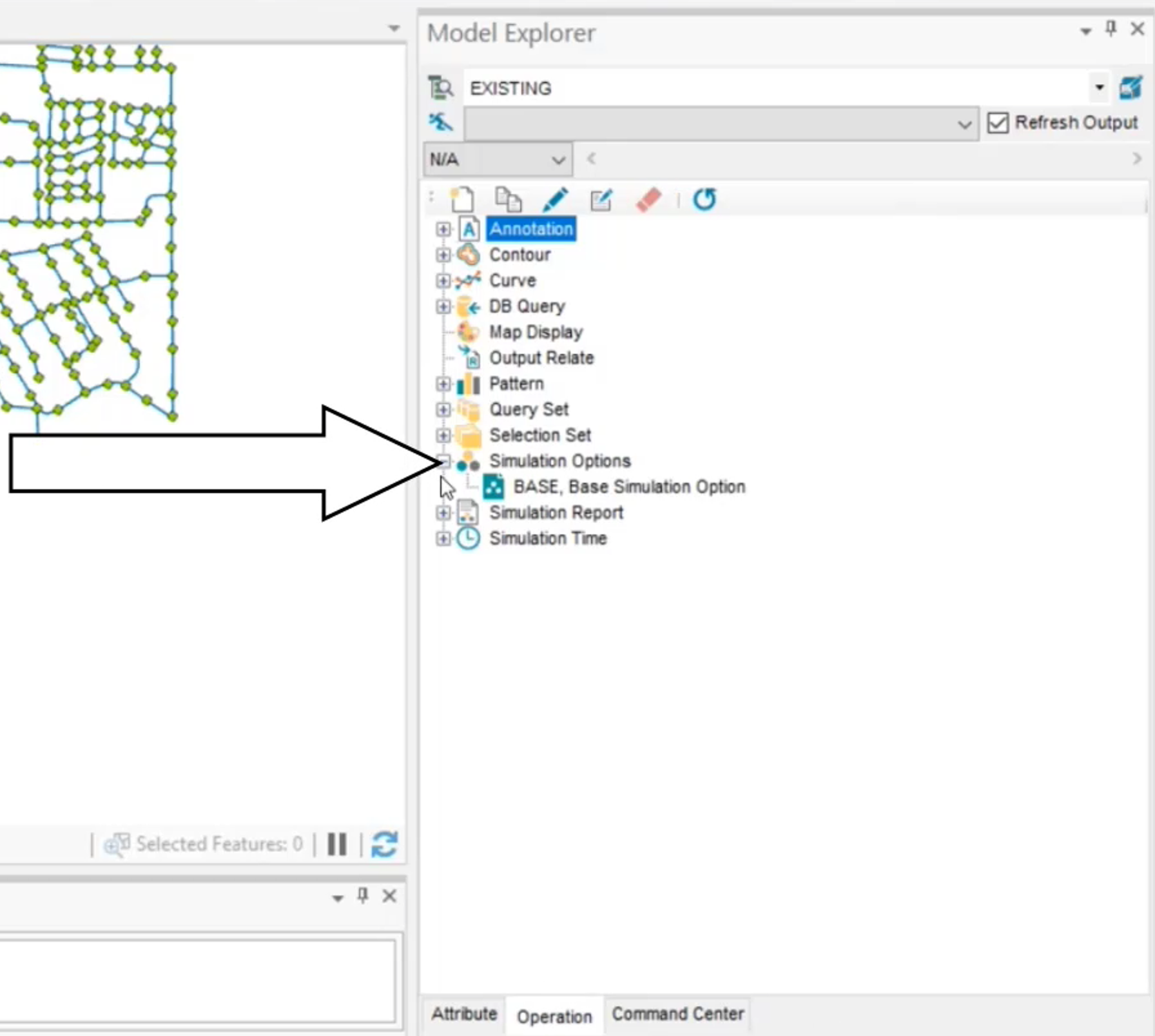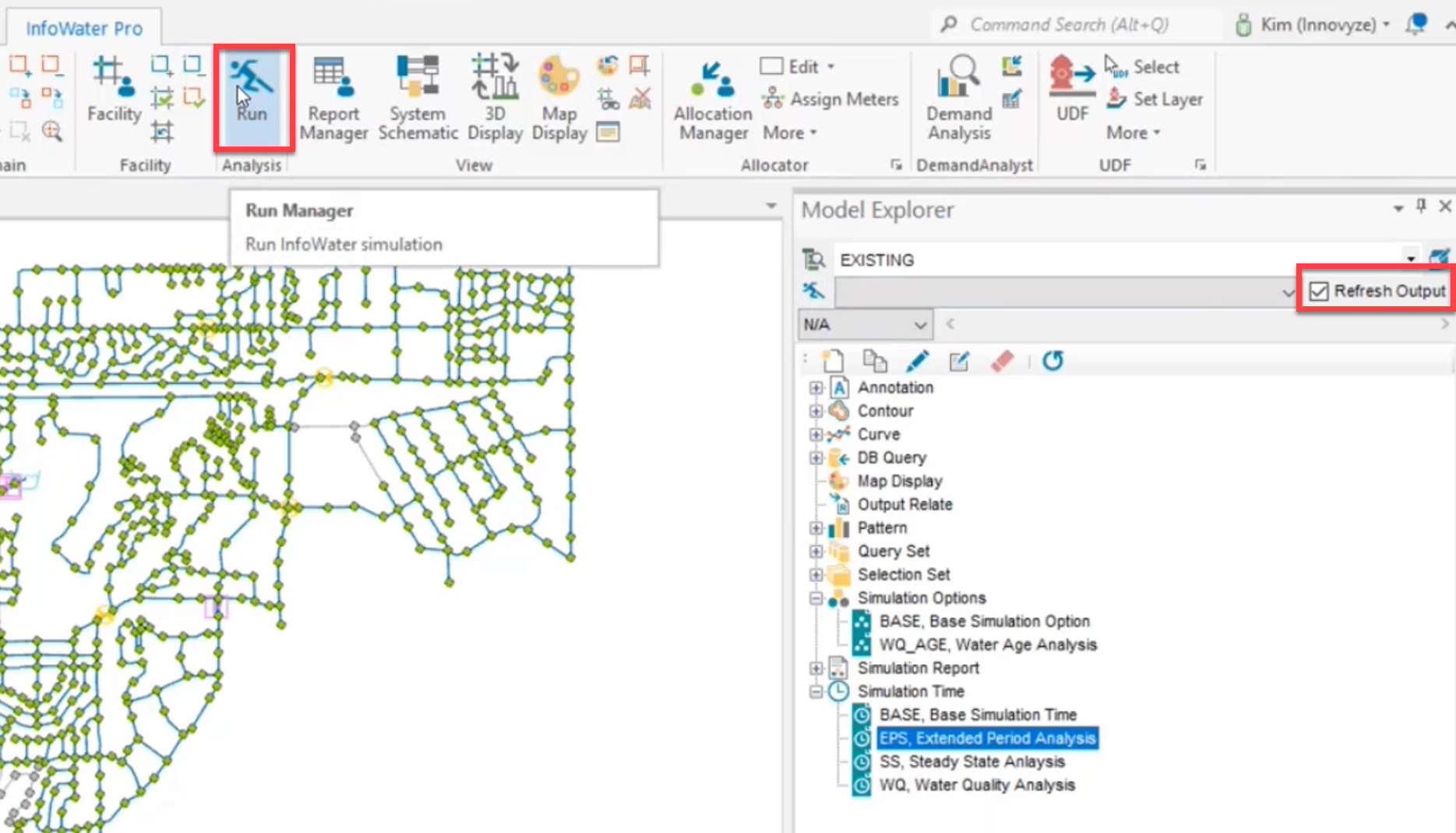Performing a Water Age Analysis
Set up and run a water age simulation analysis.
Tutorial resources
These downloadable resources will be used to complete this tutorial:
Step-by-step:
Once you are done calibrating the hydraulic model, you are ready to perform a water age analysis. In InfoWater Pro, a water age analysis computes the amount of time that water has been in the network at each node throughout an extended period simulation.
- Open the appropriate .aprx file in ArcGIS Pro.
- From the ribbon, InfoWater Pro tab, Project panel, click Initialize.
To set up the simulation options:
- In the Model Explorer, Operation tab, expand Simulation Options.
- Double-click BASE, Base Simulation Option.

- In the Simulation Options dialog box, click Clone.

- In the New Simulation Options popup, New ID field, type “WQ_AGE, Water Age Analysis”.
- Click OK.
- In the Simulation Options dialog box, click the Quality tab.
- Select Water Age.
- Click OK.

To set up the simulation time:
- In the Model Explorer, Operation tab, expand Simulation Time.
- Double-click EPS, Extended Period Analysis.
- From the Simulation Time dialog box box toolbar, click Clone.
- In the New Simulation Time dialog box, New ID field, type “WQ, Water Quality Analysis”.
- Click OK.
- In the Simulation Time dialog box, set the Duration to 240 hours.
- Click OK.

To run the simulation:
- In the Model Explorer, enable Refresh Output.
- In the ribbon, Analysis panel, click Run.

- In the Run Manager, Standard tab, expand Simulation Options.
- Select WQ_Age, Water Age Analysis.
- Expand Time Setting.
- Select WQ, Water Quality Analysis.
- Click Run.

- When the simulation is complete, click OK.
- Review the results of the water age analysis simulation. In the map, select a junction.
- In the Model Explorer, Attribute tab, click Graph.

- In the Report Manager dialog box, set the graph parameter to Water Age.
Notice the initial rise in water age. At time zero, all pipes are full, and the age is showing as zero because an initial water quality value was not entered. Water quality results typically level out after stable conditions are reached.

- To close the Report Manager, click Hide.